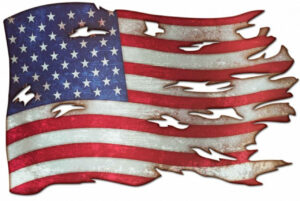 Is the United States on the verge of Civil War 2.0? The answer is…well, complicated. Let me explain.
Is the United States on the verge of Civil War 2.0? The answer is…well, complicated. Let me explain.
The United States is already in the throes of a type of civil war that involves two distinct sides and a good deal of violence. However, unlike America’s first civil war, the new civil war will not involve states seceding from the Union or the creation of state-sponsored standing armies. The violence we’ll experience will be intermittent and isolated. There will be no battlefields like in Civil War 1.0 and our divisions will be values-based rather then geographical.
The idea of a civil war in the United States, up until a few years ago, was not on anyone’s radar. That doesn’t mean that civil wars were a mystery. Plenty of countries over the years have engaged in civil war. In fact, there have been more than 200 civil wars around the globe since the end of World War II. Those civil wars have been monitored and studied by political scientists, sociologists, and other academics. What they found is that civil wars are predictable and have similar causes.
The Office of Net Assessment, an internal think tank within the Pentagon, recently commissioned a study by political scientist Michael J. Mazarr of the Rand Corporation to assess the danger of our national decline. The study, entitled “The Societal Foundations of National Competitiveness,” came to some stark and sobering conclusions.
First, the study found that there are seven attributes that are necessary for national competitiveness: national ambition and will; unified national identity; shared opportunity; an active state; effective institutions; a learning and adapting society; and competitive diversity and pluralism. Sadly, Mazarr found that the United States is losing in almost all of these categories.
For instance, our nation’s ambition and confidence is waning. The majority of Americans believe that we are on the wrong path, although there is no clear agreement about what path we should be on. Only 25% of Americans polled believe the United States is heading in the right direction, while six-in-ten feel more fear than hope for the future. Just 10% are “very satisfied” with how our democracy is working, with two-thirds of those surveyed believing public officials don’t care what they think.
In addition, national unity and cohesion are on the decline. Traditionally, the United States has been effective at assimilating diverse groups into the “American melting pot.” Not so anymore. Rather than assimilating, individual groups are more often retaining their previous identities, not melding into the larger American society. According to Mazarr, “A country with a rapidly diversifying population—though it gains competitive advantages from this diversity—will also face greater hurdles to sustaining a sense of coherent national identity.”
The United States, long known for the opportunity it provides, is experiencing increasing constraints on the opportunities offered to its citizens. This is due in large part to rising inequality. The United States is becoming a country of “haves” and “have nots.” For instance, between 2001 and 2016, the median net worth of the middle class fell 20%. The working class did even worse, losing 45% of its net worth. For the first time since the end of World War II, millennials and the generations that have followed are likely to earn less than their parents did.
There is some debate over whether or not the government can fix these problems. It would seem that, at the very least, the government can have some positive impact. However, to date, the US government has been largely unwilling to intervene on behalf of the middle and working classes. According to the World Bank, over the past twenty years, the United States government has been ineffective at improving the prospects of most of its population. The wealthy have seen their net worth skyrocket and their taxes decrease, but very little has been done to meaningfully aid the rest of the population.
At the same time, private-sector productivity has been stagnant, and corporations have struggled with bureaucracy and bloat. The same is true of universities, which spend nearly as much on administration as teaching. Likewise, a third of all dollars spent on healthcare in the United States is spent on administrative costs, making the American healthcare system one of the costliest and least effective in the world. The result has been higher costs for consumers, runaway student debt to secure an education, and healthcare costs that bankrupt an increasingly large number of Americans.
Traditionally, the United States has had a “can do” attitude, fixing whatever problems it faced. Sadly, those days may be over. Mazarr points out that, when countries start to fail, “it is a negative feedback loop, a poisonous synergy.” When a country starts to decline, it is hard to turn things back in a positive direction. The energy of the citizenry that is needed to reverse the slide is sapped by mistrust and misinformation. Rather than improving things and returning the country to the greatness it once experienced, some people channel their energy into burning things down in the hopes of starting over.
Following the Great Depression, Americans, in large part, were pulling in the same direction. To be certain, there were those that disagreed with and fought against FDR’s New Deal, but the vast majority of the country wanted the same thing: to restore prosperity to the entire nation. That doesn’t seem to be the case any longer. It’s not that we agree on our destination, but disagree on how to get there. We can’t even agree on where we should be going. In fact, we often can’t agree on the reality of the issues we face.
Civil War 1.0 was fought primarily over slavery. I know that many people disagree with that assessment, instead pointing to disagreements over economic issues, especially in the South. But what were those economic issues? Oh yeah, slavery.
In any case, the point is that there were legitimate, realistic issues that led to Civil War 1.0. Not so with our current conflict. According to Tom Nichols, writer for The Atlantic and former professor at the Naval War College, “[c]ompared with the bizarre ideas and half-baked wackiness that now infest American political life, the arguments between the North and the South look like a deep treatise on government…The United States now faces a different kind of violence, from people who believe in nothing—or at least, in nothing real. We do not risk the creation of organized armies and militias in Virginia or Louisiana or Alabama marching on federal institutions. Instead, all of us face random threats and unpredictable dangers from people among us who spend too much time watching television and plunging down internet rabbit holes. These people, acting individually or in small groups, will be led not by rebel generals but by narcissistic wannabe heroes, and they will be egged on by cowards and instigators who will inflame them from the safety of a television or radio studio—or from behind the shield of elected office. Occasionally, they will congeal into a mob, as they did on January 6, 2021.”
Nichols brings up two important points. First, addressing the issues our nation faces is made difficult by the fact that, as a people, we no longer have a shared reality. We can’t even agree on the problems we face, let alone effectively address them.
Second, Civil War 2.0 will not be what you might expect. It will involve random acts of violence by individuals or small groups who have only the foggiest notion of what they are fighting for or against. They will attack a pizzeria because they think pedophiles are abusing children and drinking their blood in a non-existent basement. They will mount a charge on an FBI office because they disagree with FBI agents from a different office carrying out their legal duty. They will attempt to kidnap a governor for vague reasons they can’t fully articulate. They will blow up a federal building because “government bad.” They will attack the Capitol of our democracy because their leader told them to do it based on some unproven claim that the election had been stolen.
Edward Luce, writer for the Financial Times, made a comment on Twitter bemoaning the illiberal politics and violent tendencies of the MAGA Republican Party. “I’ve covered extremism and violent ideologies over my career,” he wrote. “Have never come across a political force more nihilistic, dangerous, and contemptible than today’s Republicans. Nothing close.” That tweet was then re-tweeted by General Michael Hayden, former CIA Director under Presidents George W. Bush and Barack Obama, who added “I agree. And I was the CIA Director.”
Perhaps the best science conducted on the subject of a potential civil war is being carried out by the Center for Systemic Peace. The Center’s Polity Project predicts civil wars around the world. Dr. Barbara F. Walter, a quantitative social scientist, has done a brilliant job of analyzing the data from the Polity Project and applying it to the United States. (For a great education about Dr. Walter’s work, I recommend this video where Dr. Walter discusses her research with Michael German of the Brennan Center.)
According to Dr. Walter, there are two overriding issues that help predict a potential civil war. The first is anocracy. An anocracy is a government that is neither democratic nor authoritarian. An anocracy is a middle ground between the two. It is usually unstable and transitioning, involving either a democracy transitioning to an autocracy or an autocracy becoming more democratic. The faster a country is transitioning from one form of government to another, the higher the likelihood for a civil war.
These anocracies can go by several names. For instance, they are sometimes referred to as “partial democracies,” “hybrid democracies,” or “illiberal democracies.” An example of this type of democracy is one where people are allowed to vote (although barriers may be erected to discourage voting), but their vote is either not counted or not given full weight.
For example, next term, the United States Supreme Court will hear the case of Moore v. Harper which will give the Court the opportunity to rule on the independent state legislature (ISL) theory. The ISL theory posits that, while Americans have the right to vote in federal elections, the state legislature has the authority, if it chooses, to ignore the will of the voters and send a congressional delegation to Washington or appoint presidential delegates to the electoral college that do not correspond to the election results. The implications are obvious.
Assume a state, based on the popular vote, elects Joe Biden over Donald Trump for President. Traditionally, that state would then send Biden electors to the electoral college. Under the ISL theory, the legislature can ignore the voters and instead send Trump electors to represent the state in the electoral college. In other words, in theory, citizens have the right to vote, but it is up to the state legislature to decide if those votes will count or be ignored.
The second primary cause of civil wars involves identity. Rather than forming a government around ideology—for instance, conservative or liberal beliefs—countries that form around identities (i.e., race, ethnicity, religion, gender, etc.) tend to be more prone to civil wars. This is especially true in countries where the identity group that is relegated to second class citizenship once held power (or some level of power) in the country.
The Polity Project ranks countries on a scale of positive-ten to negative-ten. The most democratic countries (Denmark, Switzerland, Canada) are ranked from positive-six to positive-ten. The most authoritarian countries (North Korea, Saudi Arabia, Bahrain) are ranked negative-six to negative-ten. Those in the middle—from positive-five down to negative-five—are anocracies and are most prone to civil war.
The United States was rated as a positive-ten up until 2016, when it was downgraded to positive-eight. In 2018, Dr. Walter was on a task force studying the data from the Polity Project when she realized that the two most important predictive factors they were looking at suddenly applied to the United States. Until that time, the task force had never looked at the United States because the belief was that the United States was, if not immune to civil war, in the very least, a civil war in the US was extremely unlikely. But as Dr. Walter realized, things in the United States relative to these two predictive factors were changing, and they were changing fast. In fact, the United States was downgraded again in 2019 to positive-seven, and at the end of 2020, it dropped down to positive-five, into the anocracy zone. Although the task force was not allowed to put the United States on a watch list for civil war, Dr. Walter said that if they were, the United States would have gone on the watch list at the end of 2020.
The good news is that once the peaceful transfer of power took place in January 2021, the Polity Project upgraded the United States to positive-eight. Unfortunately, the United States lost its title as the world’s longest running democracy. That title now belongs to Switzerland.
Before we start to celebrate our new ranking of positive-eight, it is important to point out in the years immediately before Civil War 1.0, the United States was also at a positive-eight ranking. By no means are we out of the woods.
So, where do we go from here? I’d like to believe that our political leaders will find a way to move forward in a peaceful, bipartisan way. Sadly, that is highly unlikely. The Republican Party has abandoned any pretense of supporting democratic institutions or values. The leaders of the Republican Party have embraced a “win at all costs” mentality which puts them at odds with our democratic traditions. Throughout the country, they have assaulted voting rights laws, making it increasingly difficult for people to vote, in particular, poor and minority voters. They have also embraced violence as a legitimate political tool, often encouraging or defending violence on the part of their supporters. These two illiberal elements are hallmarks of authoritarianism and show a willingness on the part of Republicans to abandon our democracy if it means they can gain power.
“There is no single principle that unites these Americans in their violence against their fellow citizens,” Nichols writes. “They will tell you that they are for ‘liberty’ and ‘freedom,’ but these are merely code words for personal grudges, racial and class resentments, and a generalized paranoia that dark forces are manipulating their lives…What makes this situation worse is that there is no remedy for it. When people are driven by fantasies, by resentment, by an internalized sense of inferiority, there is no redemption in anything. Winning elections, burning effigies, even shooting at other citizens does not soothe their anger but instead deepens the spiritual and moral void that haunts them.”
Sadly, Republicans see their violent, illiberal crusade as more important than peaceful coexistence, more important than the rule of law, and more important than the democracy our fellow citizens fought and died to preserve. They have given up on the Great American Experiment, but not for any noble or high-minded reason. No, they have turned their back on our democracy for the most ignoble reason imaginable; to gain power, to control their fellow citizens, to be above the law.
I’d like to disagree with Tom Nichols when he says there is no remedy for what currently ails us in the United States. I fervently hope he is wrong, but I can’t help but fear he is right.

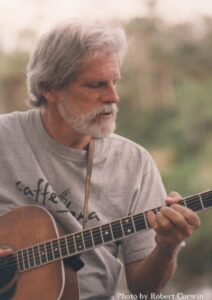

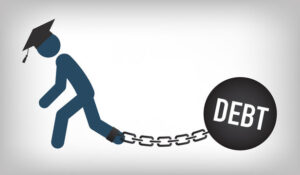 I am saddened, but not surprised, at the number of people who are screaming “It’s not fair” in response to the recent announcement that the government is going to forgive up to $20,000 of student loan debt for select Americans who currently have a student loan. I suspect that most of the people opposed to student loan forgiveness don’t know the history of student loans, and therefore have based their opinions on emotion or misinformation rather than facts.
I am saddened, but not surprised, at the number of people who are screaming “It’s not fair” in response to the recent announcement that the government is going to forgive up to $20,000 of student loan debt for select Americans who currently have a student loan. I suspect that most of the people opposed to student loan forgiveness don’t know the history of student loans, and therefore have based their opinions on emotion or misinformation rather than facts. Is the United States on the verge of Civil War 2.0? The answer is…well, complicated. Let me explain.
Is the United States on the verge of Civil War 2.0? The answer is…well, complicated. Let me explain. I’m in the mood to write a couple thousand words about one of my favorite sports, IndyCar racing. This past week, the IndyCar series announced their 2023 schedule, and it got me thinking about what I would like to see change with the schedule. I love the series, but I’ve never understood why their season ends so early every year. This year, for instance, the final race of the season is on September 11, a full two months or more before most American-based motorsports series end.
I’m in the mood to write a couple thousand words about one of my favorite sports, IndyCar racing. This past week, the IndyCar series announced their 2023 schedule, and it got me thinking about what I would like to see change with the schedule. I love the series, but I’ve never understood why their season ends so early every year. This year, for instance, the final race of the season is on September 11, a full two months or more before most American-based motorsports series end. The other night, the Cubs were on Sunday Night Baseball on ESPN playing the Giants. I was looking forward to watching the game because earlier this year, I gave up my MLB.TV subscription and had not seen many Cubs games. But when game time approached, I decided not to watch the game. I just couldn’t do it. Watching the Cubs this year has been too depressing, and I wasn’t in the mood to be depressed again. As it turned out, the Cubs lost the game 4-0 and, from reports I read after the game, they played just as badly as I feared.
The other night, the Cubs were on Sunday Night Baseball on ESPN playing the Giants. I was looking forward to watching the game because earlier this year, I gave up my MLB.TV subscription and had not seen many Cubs games. But when game time approached, I decided not to watch the game. I just couldn’t do it. Watching the Cubs this year has been too depressing, and I wasn’t in the mood to be depressed again. As it turned out, the Cubs lost the game 4-0 and, from reports I read after the game, they played just as badly as I feared. It isn’t much to look at. It’s not ugly, but there’s nothing beautiful about it either. It’s just an old barn. Gray, weathered boards cover the exterior, along with a few mismatched sheets of unpainted brown plywood here and there covering holes in the walls. The roof is covered with gray corrugated steel, the edges rusty and worn.
It isn’t much to look at. It’s not ugly, but there’s nothing beautiful about it either. It’s just an old barn. Gray, weathered boards cover the exterior, along with a few mismatched sheets of unpainted brown plywood here and there covering holes in the walls. The roof is covered with gray corrugated steel, the edges rusty and worn.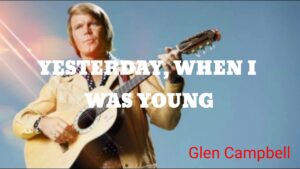
 Want to be a better person?
Want to be a better person? Later this week, I’ll be traveling to Macomb, IL to finish something I started in 1984.
Later this week, I’ll be traveling to Macomb, IL to finish something I started in 1984.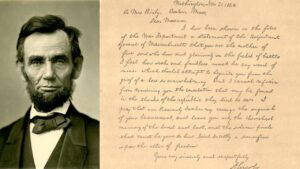 THE STORY
THE STORY